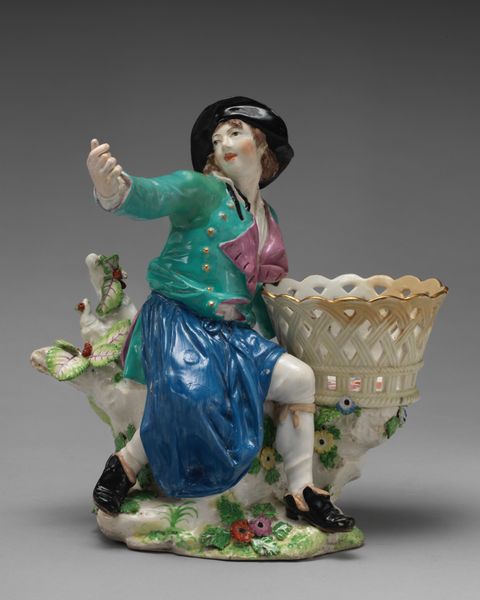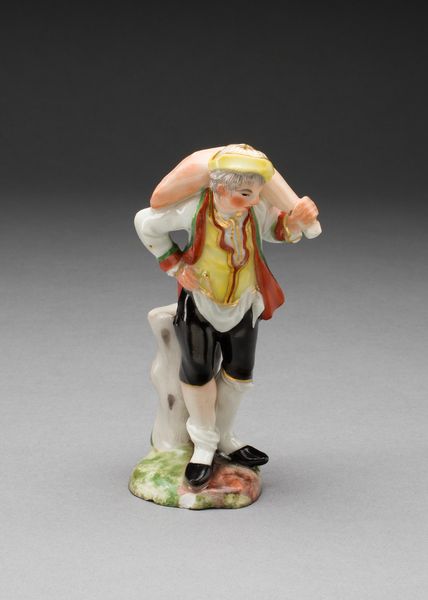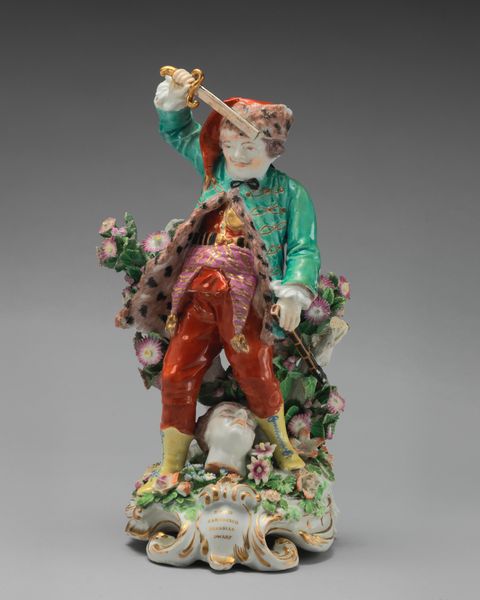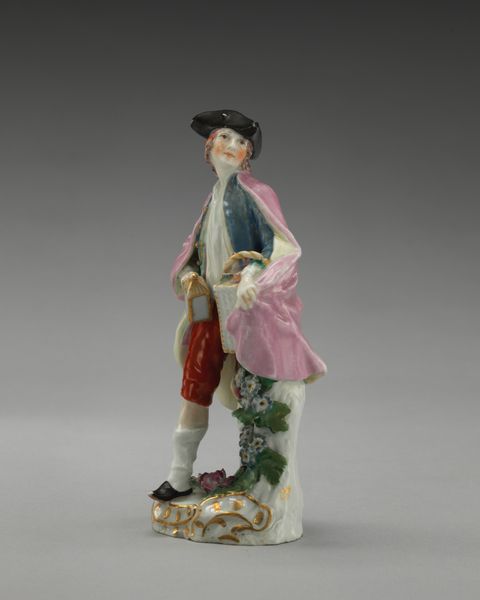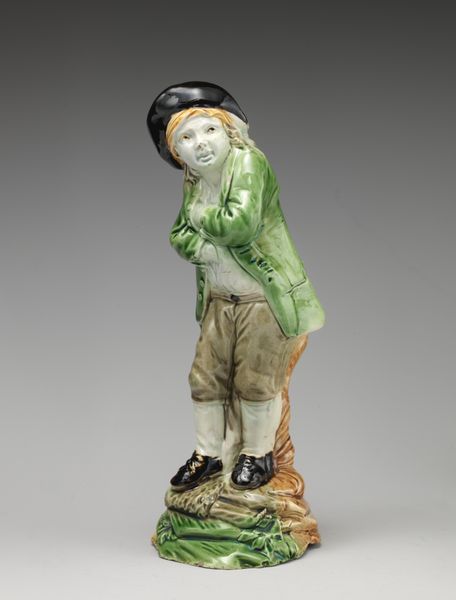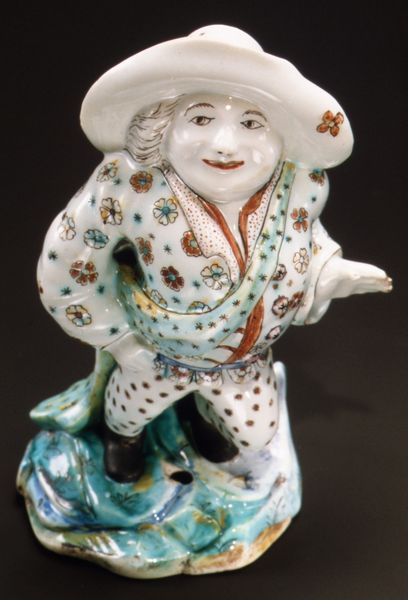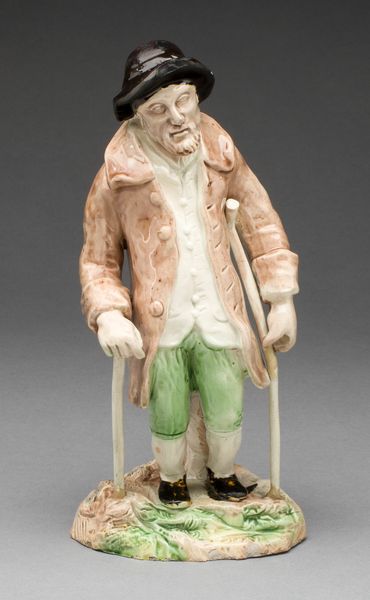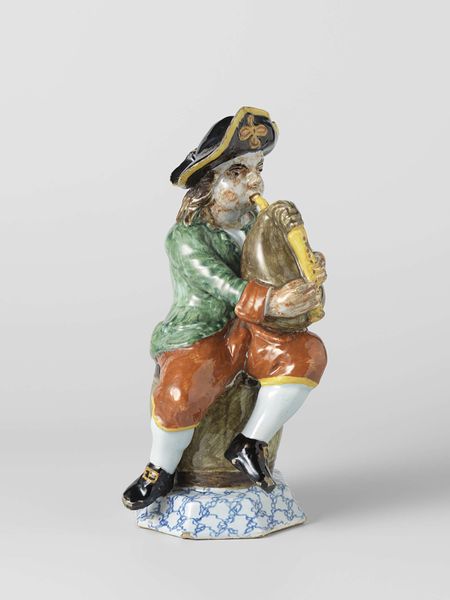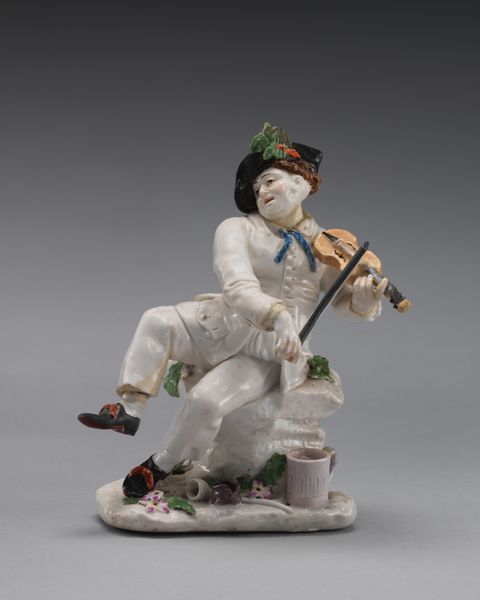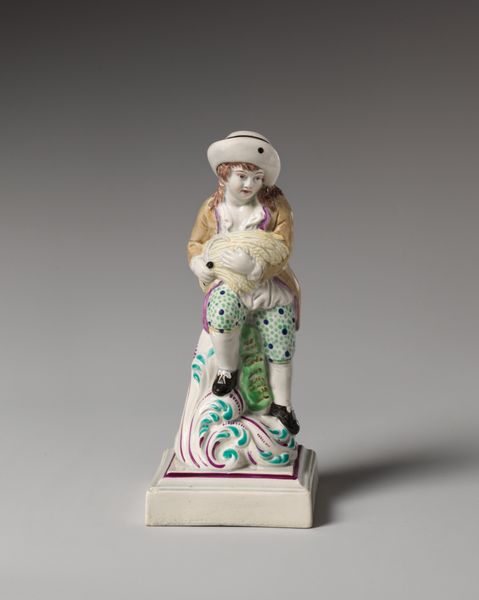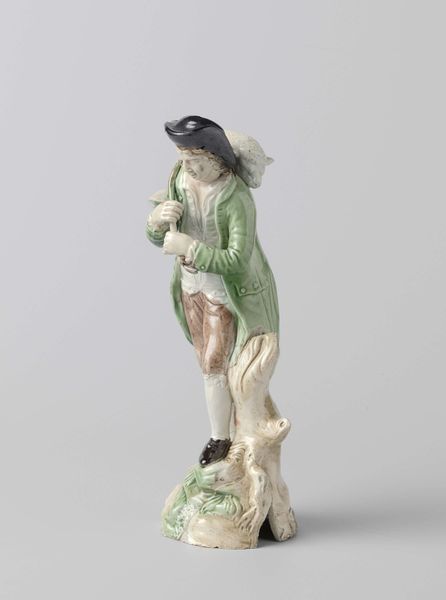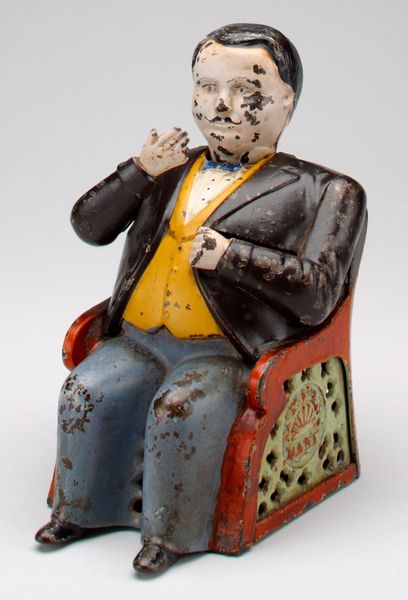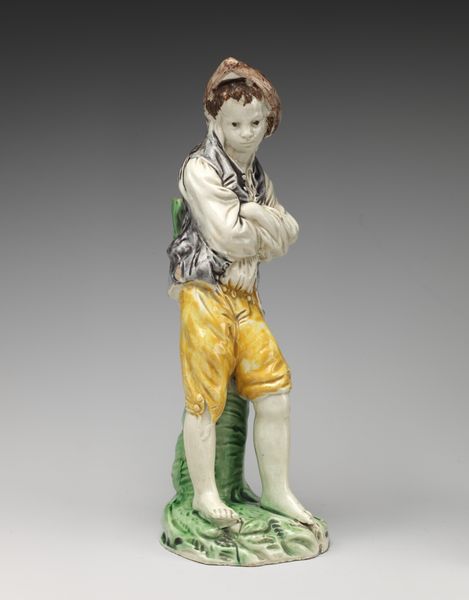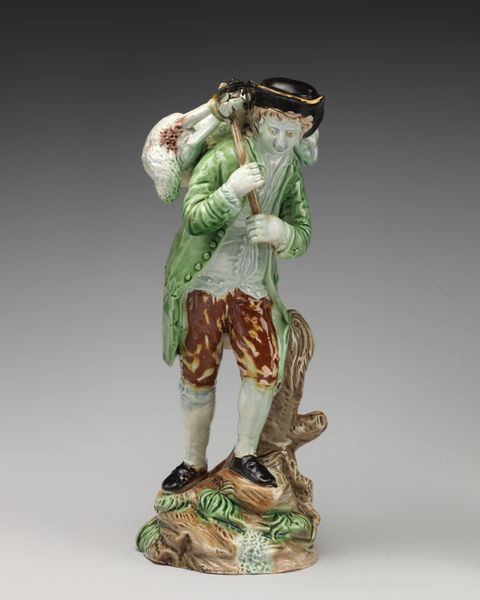
ceramic, sculpture
#
portrait
#
ceramic
#
figuration
#
sculpture
#
genre-painting
#
decorative-art
#
rococo
Dimensions: 8 × 7 in. (20.3 × 17.8 cm)
Copyright: Public Domain
Curator: Looking at this piece, I’m immediately struck by its… wistful quality. Like a scene from a porcelain dream. Editor: Indeed. What we have here is an exquisite “Inkstand” crafted by Paul-Louis Cyfflé between 1755 and 1765. It’s a remarkable example of Rococo decorative art now residing at the Metropolitan Museum of Art. Curator: Rococo, definitely. You can see it in the fanciful base, that dreamy landscape. And the shepherd… is he about to write a love letter, perhaps? The expression on his face! He looks terribly pleased with himself. Editor: His posture creates an interesting diagonal. Note the careful arrangement of the figure, the staff, and the inkwell—forming a sort of triangular structure within the overall composition. It draws the eye and emphasizes his poised expectation. Curator: But that expectation is half the fun. Is he waiting for inspiration? Did the ink just dry? Or is he maybe realizing he forgot the paper? It’s all so deliciously ambiguous. He might be enjoying this pause. There is tension, but more as play than as actual burden. Editor: Precisely. Cyfflé captures that moment beautifully using a limited yet effective color palette. The blues of the “water,” set against the muted greens and browns, guide the gaze, don’t they? This tension between naturalism and artifice is intrinsic to the piece. It is a moment pulled away from something natural made extremely ornate. Curator: Almost precious. Like a little joke, whispered across the centuries. It seems Cyfflé understood the absurd joy of waiting for the muse to arrive. It also reminds of more recent artwork, with an obvious focus in narrative, as genre-painting tends to explore narrative aspects within the image. The beauty here emerges when connecting past and present, tradition and experiment, but never really committing. Editor: Absolutely. The “Inkstand” functions not merely as an object of utility but as a contemplative object, a space for playful engagement with creativity. What is this little piece telling us? How much we think the past looks down on us with their accomplishments. Curator: Which makes you wonder... were those accomplishments as thought-through and serious as we usually imagine them? It’s this reminder that, makes art worth spending time with. Editor: It's in the subtle questions raised, and lingering ambiguities. Thank you.
Comments
No comments
Be the first to comment and join the conversation on the ultimate creative platform.
